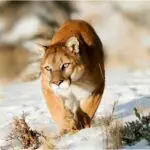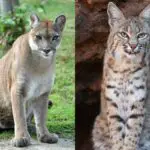Cougar vs Mountain Lion, are they different? Whats the deal? Well, you’re now alone, this is a common point of confusion for many others. So, lets sort this out!
Mountain lions are ferocious cats found throughout the Americas, but what about cougars? Is one worse than the other?
Truthfully, cougars and mountain lions are the same animal species! They both belong to the Felidae (cat) family, and Puma concolor is their scientific name.
These two animals are the same animal, but simply different names for them! This is a lot like the term “burro” also being used to refer to a donkey – they’re the same animal with a different name.
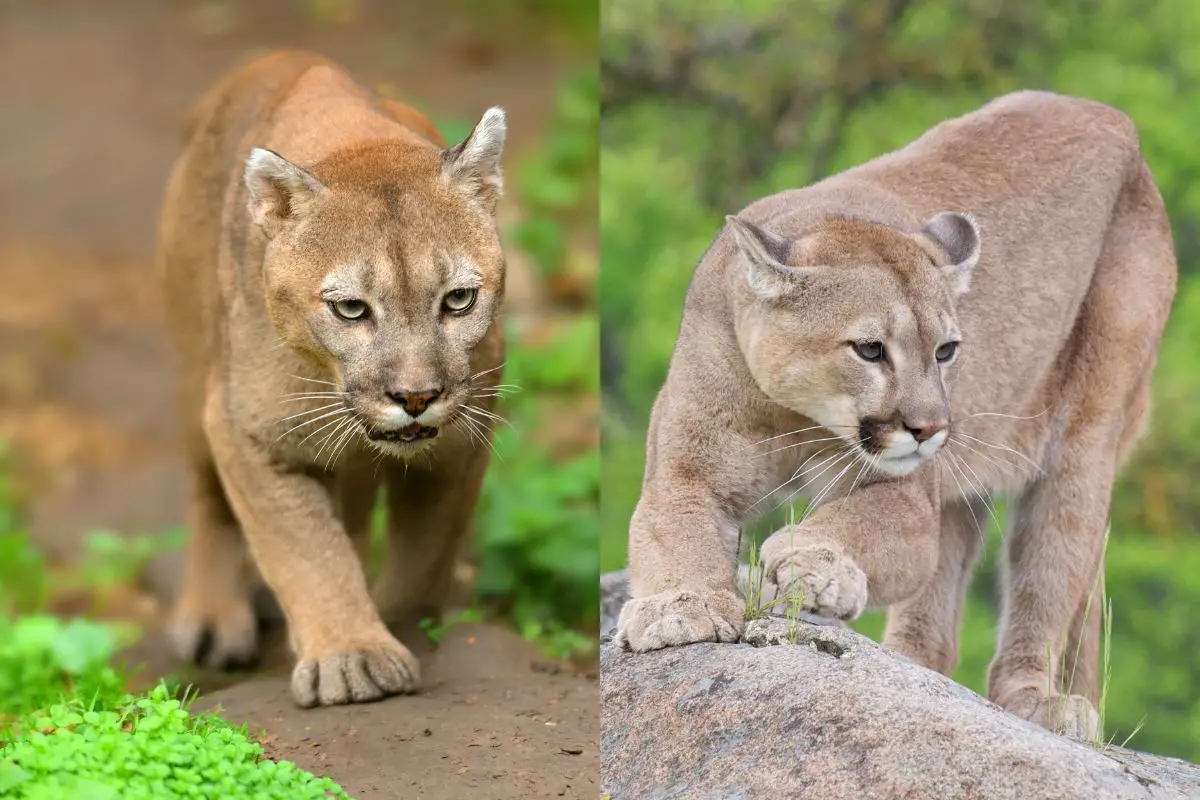
With that being said, there are a few small differences between a cougar and a mountain lion. This is largely because of where they are found, but we will dive into everything you need to know further on in the post.
So, if you’re interested in learning about the differences between a cougar and a mountain lion, keep reading!
We’re going to cover it all in the sections below.
Cougar Vs Mountain Lion: The Main Differences
Classification
- Also known as: mountain lion, puma, cougar, panther, catamount, red tiger, deer tiger, painter
- Average lifespan in the wild: 10-13 years
- Scientific name: puma concolor
- Genus: Puma
- Family: Felidae
- Order: Carnivora
- Class: Mammalia
- Kingdom: Animalia
- Phylum: Chordata
- Height: 2-3 feet
- Weight: 64-220 lbs
- Length: 3.25-5.25 feet (head and body); 23.5-33.5 inches (tail)
- Conservation status: varies depending on subspecies, typically least concern (population decreasing)
- Number of subspecies: seven living subspecies, one extinct
Cougar vs Mountain Lion vs Puma
In the realm of big cats, confusion often surrounds the nomenclature of three particular species: the cougar, the mountain lion, and the puma.
However, the secret behind this mystery is actually quite straightforward – all three are different names for the same creature. Yes, you heard it right!
Puma concolor is the scientific name for this elusive predator, but its common names vary widely based on geographical location and local culture.
No matter which name you hear, they are referring to the mountain lion found across North and South America. As such, cougars and mountain lions are the same animal.
All these names for one animal exist because of the wide range that the mountain lion has. Names change depending on where the animal is found!
For example, the term “mountain lion” is more commonly used in most parts of the United States, but “catamount” is typically used in states like New Hampshire and Vermont.
Many people in the south might refer to these animals as “panthers” as the Florida panther (a subspecies of cougar) is found there.
The term “puma” is commonly used by people who are not native to the US, despite the name coming from the Inca!
Overall, in the US, “mountain lion” or “cougar” are primarily used, and in South America and the rest of the world, “puma” is the popular term.
It’s important to remember that no matter which name you hear, with the exception of “panther”, they are referring to mountain lions.
The term “panther” is an exception, as this name is rarely actually used to describe a mountain lion. Instead, it is used to describe melanistic (black) jaguars and leopards.
However, in this post, we will be focusing on “cougar” and “mountain lion”, since those are the names we’re exploring today!
What Are The Differences Between A Cougar And A Mountain Lion?
Size
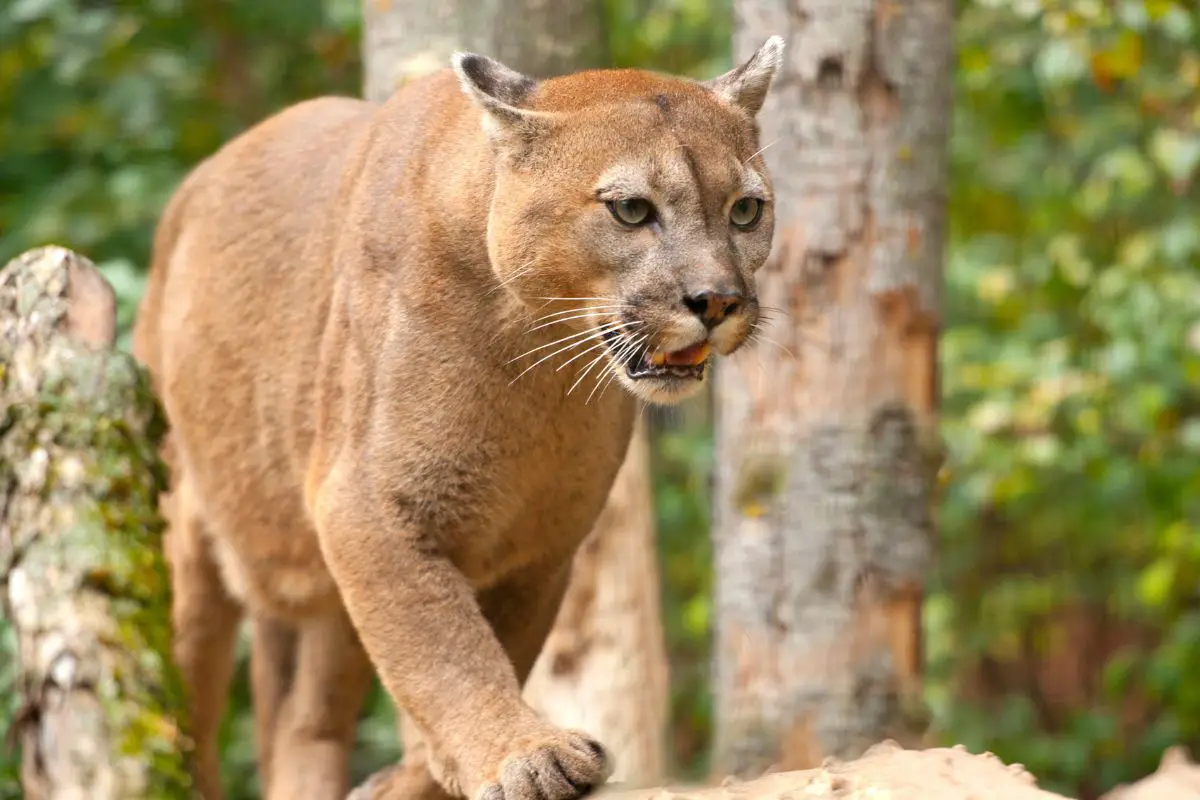
One of the more notable differences between a cougar and a mountain lion is their size difference. As a general rule, mountain lions are usually larger than the cougars found closer to the equator.
This might be because mountain lions need to be large enough to scale mountains and prey on larger animals that occur there.
Cougars might be smaller because of their environment – staying hidden in grasslands is more crucial for them. They will still climb, but it won’t be to the extent that animals in the north do.
Their prey is also typically smaller, so there’s no need for them to be as large in order to catch it.
Any difference in size is likely to only be due to the environment and the diet they have. They are still the same species of animal.
Fur Color
Similarly, the coloring of these animals is impacted by where they are found. Mountain lions, which are in the north, typically have gray-toned fur to help them blend in more.
They are still the tan color they’re famous for, but it will have cooler undertones. This also applies to their gray underbellies, which will be more gray due to the environment they’re in.
In mountainous regions, there are usually lots of rocks to blend in with.
Cougars are the opposite. The animals that live in Central and South America will likely have a more red or warm-toned fur.
Even the white or gray fur on their underbelly will be warmer than that of a mountain lion’s.
This is because of the colors found in their environment, with a lot of them living in deserts or similar areas.
There, there is more red sand and red rocks to have to blend into in order to be a successful hunter.
These differences in color aren’t obvious in many cases. However, if you look at side by side pictures, you may spot a few key differences in coloring!
Hunting Range
Another difference between the cougar and mountain lion are their hunting ranges.
Because this species is incredibly adaptive, they are found in a variety of habitats, so their hunting ranges vary a lot!
The term “mountain lion” is associated with more mountainous regions, and therefore that is their hunting range.
Their presence in mountain and highland areas means that they are well adapted to surviving in them.
Cougars are usually in South America, but also southern states in the US. They are more adapted to hunting in forests and prairies rather than in high altitudes.
However, both animals are still Puma concolor. They may be different subspecies depending on where they are, too, but they will still have the same scientific name, only with an added name on the end.
Diet
Because cougars and mountain lions have different hunting ranges, a lot of their prey will be different, too!
Of course, they will still share some prey, but there are key differences to note. For example, mountain lions will usually hunt deer and even elk sometimes.
Cougars will not have access to elk, as elk are primarily found in the north. Cougars mostly prey on birds, sloths, lizards, various rodents, and vicuña (camelid).
Sometimes, they will even prey on the cubs of spectacled bears or alligators.
In both cases, these cats are obligate carnivores. This means that they are only able to get their nutrition from their prey or other meat sources rather than vegetation.
Both cougars and mountain lions are adept hunters, and will typically hunt anything they feel they can take on. This occasionally includes humans, too.
Climate
Since “mountain lion” is the common name given to these animals in the Northern United States, they tend to be associated with colder temperatures.
The climates they typically live in are colder, and some even live in parts of Canada. Because of the climate they live in, the fur of a mountain lion is likely to be thicker and denser.
Not only that, but they also usually have a little more fat on than to help protect them from the low temperatures.
Cougars are found further south, including Central and South America. As such, their fur is thinner and shorter to help them stay cool.
The climate in Central and South America is typically much hotter and more tropical, and thick fur would cause the animal to overheat.
They are also likely to have less fat on them, as they won’t need the extra layers to keep them warm in the climate they live in.
What Are The Similarities Between A Cougar And A Mountain Lion?
Since the cougar and mountain lion are the same species, there are also plenty of similarities between them!
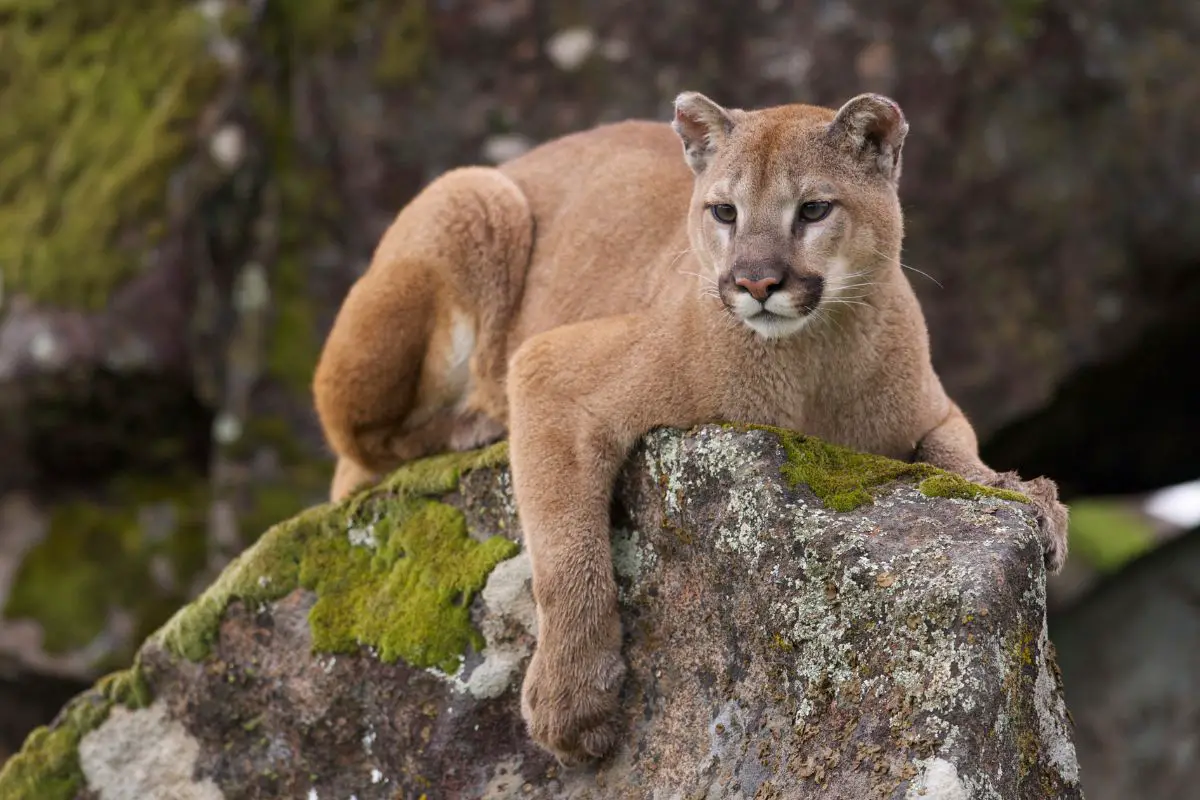
take a look at some of these below.
Lifespan
These animals have an average lifespan of 10 years. This doesn’t mean that 10 is the oldest they can reach, though! Many animals live longer, with some living for up to 20 years in rare cases.
Most wild animals have lower lifespans than they would in captivity because they do not have to worry about catching prey or fighting off other animals.
Temperament
Both cougars and mountain lions prefer to steer clear of humans and human activities. They will avoid cities and places with a lot of human activities.
However, they have been known to occasionally attack people, especially hikers that wander into the animal’s territory.
It’s important to note that cougars and mountain lions are suffering from extreme habitat loss. This has resulted in them living in closer proximity to humans than they would like.
As such, attacks are happening. In some cases, attacks occur because people come too close to dens or cubs, or the animal feels threatened.
In other cases, they may attack simply because they see humans as a food source, since we have reduced the amount of natural prey for them to hunt.
Hunting Style
These animals are excellent hunters, and will prey on anything from deer and elk to mice and birds. As we covered before, what they hunt will depend on where they are found!
In both cases, they are great stalkers, and will lie in wait for prey to get close enough before pouncing and killing. To kill their prey, a mountain lion will deliver a lethal bite to the animal’s spinal cord.
Many cougars and mountain lions like to “cache” the prey they catch.
This involves covering it with twigs and leaves so that they can return to it later on. Of course, depending on what other predators are around, this doesn’t always work.
Conservation
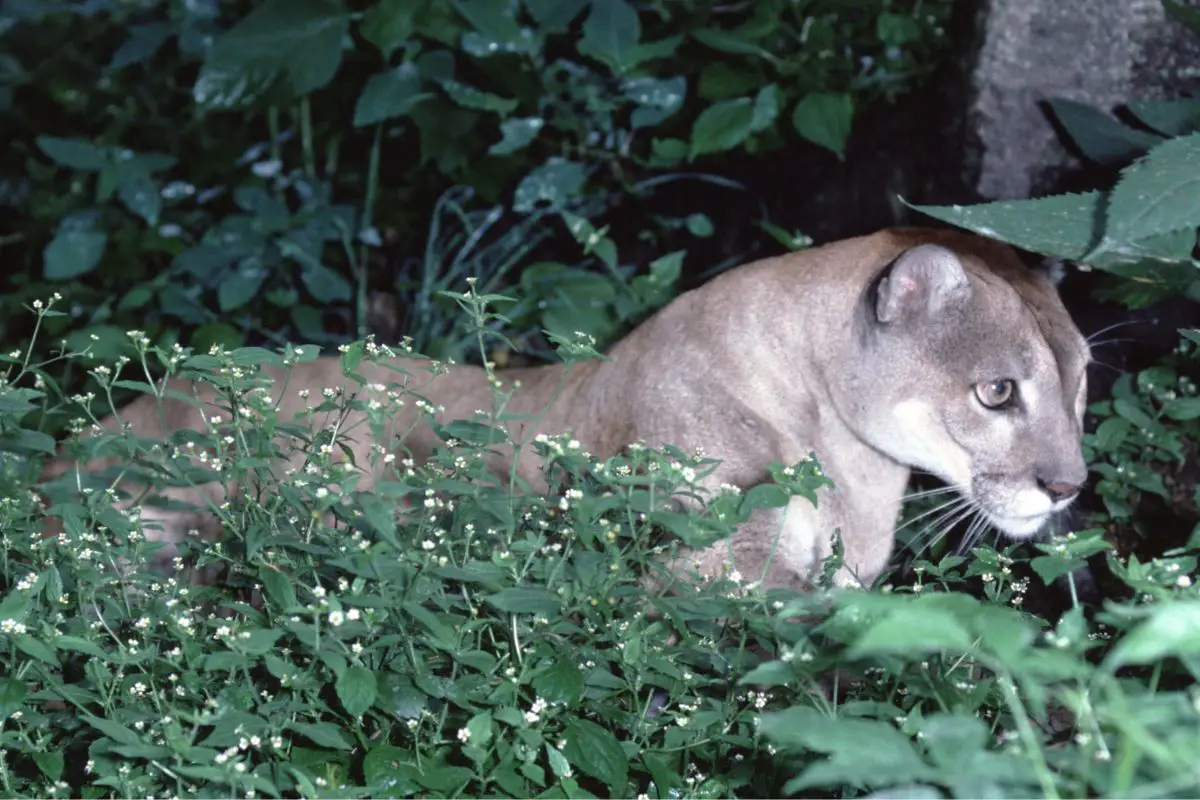
One subspecies (the Eastern cougar) is already extinct due to hunting in the 1800s. However, the surviving subspecies are listed as “least concern”.
This rating is just a general rating for the species as a whole, but some subspecies are under threat due to habitat loss and lack of prey.
The Florida panther is one of the subspecies that is threatened, with only small populations remaining.
In all cases, despite the “least concern” conservation rating, it’s no secret that cougar and mountain lion numbers have been falling over the years.
Thankfully, there are a number of conservation efforts that are trying to pull this species back and protect them.
Social Behavior
They are solitary animals, which means that they live alone and have their own territories.
The only time that these animals don’t live alone is during the mating season and when the female is caring for her cubs.
When solitary, these animals need between 50 and 125 square miles to roam, with males preferring more space.
They can breed at any time of year, and after a gestation period of 90-96 days, the female will give birth to a litter of 1-5 cubs. These cubs will then stay with her until they are ready to live on their own.
This is usually until they are around 15 months, or little over a year old. However, some cubs will stay with their mother until they are over two years old before venturing off on their own.
At 2 to 3 years of age, a female cougar will begin breeding. Males will also only begin to breed when they are sexually mature at around 3 years old.
Both males and females will only start breeding when they have established a permanent home territory, likely for safety reasons.
Final Thoughts
Cougars and mountain lions are the same species of animal. Both have the scientific name of Puma concolor, but may be different subspecies.
As such, there are a number of small differences that separate them. These include their size, fur color, hunting range, diet, and climate they live in.
However, as they are the same species, they share the same lifespan, temperament, hunting style, social behavior, and conservation issues.
Hopefully this helped you understand the cougar and mountain lion! Ultimately, they are the same animal, just with different names!
- Bengal Cat vs Wild Bengal Tiger: Complete Comparison 2025 - October 31, 2025
- Complete Wild Cat Spotting Guide for Hikers 2025 - October 31, 2025
- Lynx vs Bobcat: Complete Field Identification Guide 2025 - October 30, 2025


